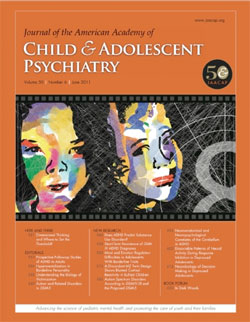News
New UH Research Focuses on the Teenage Mind


How teens think and whether their thoughts might indicate a personality disorder is the focus of a new research study led by Carla Sharp, associate professor in clinical psychology and director of the Developmental Psychopathology Lab at the University of Houston (UH).
The study covers a two-year period and investigates the relationship between borderline personality disorder traits and “hypermentalizing” in 111 adolescent between the ages of 12 to 17. Mentalizing refers to the ability to infer and attribute thoughts and feelings to understand and predict another person’s behavior. Hypermentalizing is excessive, inaccurate mentalizing.
“Why does someone with borderline personality disorder key a car, if doing so will not lead to good consequences? What compels her make that decision?” Sharp said. “I am trying to understand the development of the disorder and what happens in the brain, and what happens in the minds of these children as they develop to put them on a different trajectory compared to their peers.”
The study’s results can be used to improve early intervention, treatment and identification of borderline personality disorders in adolescents. Sharp says that can refine strategies for treatment, such as putting the breaks on hypermentalizing and encouraging the patient to stick to the facts.
The Child and Family Program at the Menninger Clinic awards Sharp as the research director of the Adolescent Treatment Program about $250,000 annually per year to conduct the program’s research as its principal investigator.
The project, “Theory of Mind and Emotion Regulation Difficulties in Adolescents with Borderline Traits,” was featured on the cover of the June edition of the Journal of the American Academy of Child & Adolescent Psychiatry.
“Borderline personality disorder is a condition in which people have long-term patterns of unstable or turbulent emotions about themselves and others,” Sharp said. “These inner experiences often cause them to take impulsive actions and have chaotic relationships.”
Indications of borderline personality disorder include: excessive anger, affective instability, a clear pattern of self-harm over two years, such as burning, cutting, suicide attempts, abandonment fears, relationship problems, significant impulsivity, drinking alcohol, drug abuse, eating disorders, including anorexia, bulimia and overeating, and participating in illegal activities.
“Clinicians have been reluctant to diagnose borderline personality disorder in adolescence because there is the notion that personality is not fully developed in childhood and adolescence,” said Sharp. “We know that the brain is only fully developed by age 25, so how can we diagnose a personality disorder in someone if they don’t have a fully developed brain yet?”
Her research, however, found that children and teens have stable patterns of interaction with others and that parents or guardians can describe their kids in terms that remain stable over time.
“Teens do not wake up at 19 and have a personality disorder on the first day of their 19th year, so there must be some precursors to the disorders,” Sharp said. “There’s been a group of people, including myself, advocating that we not necessarily diagnose borderline personality disorder in adolescence, but that we assess for it to make sure that we don’t miss these children.”
To arrive at these conclusions, the research team used the “Movie for the Assessment of Cognition (MASC) tool to assess children’s social cognition process. The youth watched 15-minute film clips, and, then, were asked to choose from our options a description of what the characters in the movie were feeling and thinking. Those options related to the categories of no mentalizing, less mentalizing, hypermentalizing or accurate mentalizing.
Through clinical interviews, the research team diagnosed 23 percent of the sample group as having borderline personality disorder. Those young people exhibited a higher frequency of hypermentalizing responses. The study also showed that individuals with borderline personality disorder misread people’s thoughts, which would upset the adolescents, making emotion regulation more challenging and leading to an increase in borderline personality disorder symptoms.
“The danger of not recognizing the precursors of borderline personality disorder in adolescents is that it can lead to years of confusion and paid for family members and the individual with misdiagnosis and lack of appropriate treatment,” Sharp said. “These families often go through years of assessment, and people might it’s bipolar disorder, depression, conduct disorder or comorbidity.”
Typically, it is not until a person is in his mid-‘20s that he gets to the right treatment facility that diagnoses the cluster of symptoms experienced since youth, Sharp said.
“The next step is to try to do this work while neuroimaging the teen’s brain, so that we can look at the biological correlates of this. Such research could potentially lead to pharmacological intervention in addition to the talk therapy,” she said.
Sharp’s research team included Department of Psychology teaching fellow Health Pane and research assistants Carolyn Ha and Amanda Venta. Collaborators included Amee Patel, Baylor College of Medicine; Jennifer Sturek, University of Virginia; and Peter Fonagy, University College London.
- Melissa Carroll
mcarroll@uh.edu